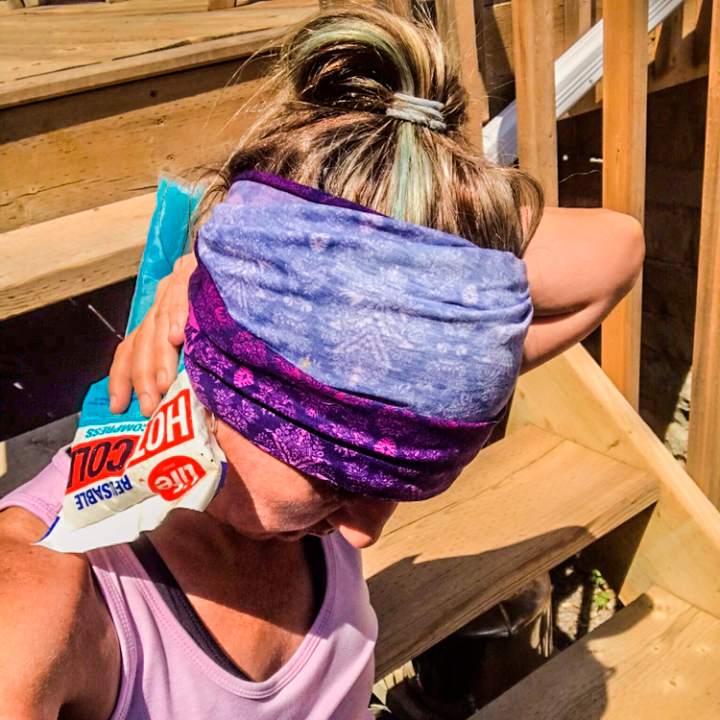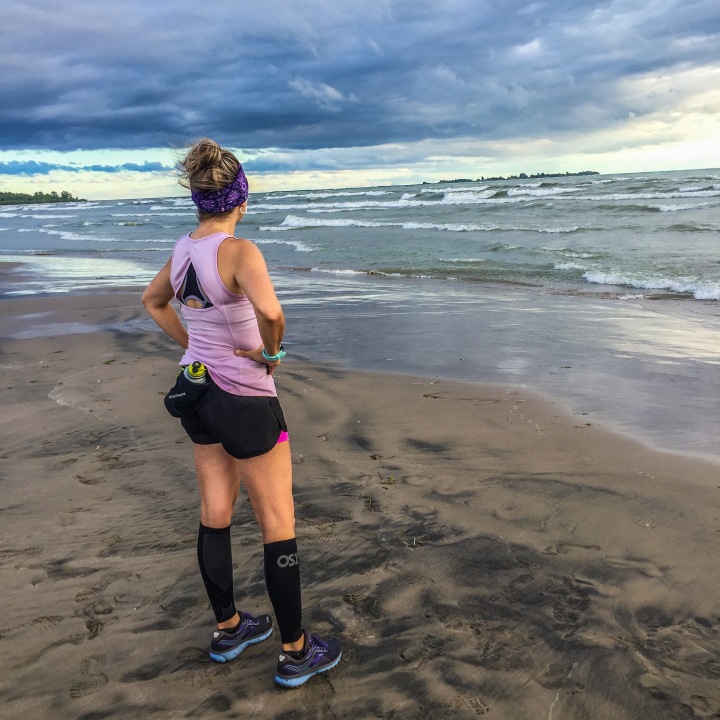
Watching footage from the Badwater-135 is a good lesson in hot weather running. Billed the “The World’s Toughest Foot Race” * it covers 135 miles (or 217 km) non-stop from Death Valley (the lowest elevation in North America at 85 metre below sea level) to Mt. Whitney, CA, at an elevation of 2,530 m, Oh, and it takes place mid-summer in sweltering desert heat. In 2018, temperatures climbed as high as 127F (53C), with the asphalt road getting even hotter (reportedly reaching 200F degrees), causing the road to melt shoes and burn runners’ feet.
The medical risks of competing in such conditions is real: heat illness and heat stroke can be serious, and can cause renal shutdown, brain damage and even death. Symptoms of impending heat illness include nausea, vomiting, headache, dizziness, faintness, irritability, lassitude, weakness, and rapid heart rate, and a decrease in sweating and goose bumps, especially over the chest, may be a sign of impending heat stroke. Heat stroke may progress from minimal symptoms to complete collapse in a very short period of time. Conditioning for this kind of abuse, err, racing is critical.
Dr Ben Jones, three time finisher writes about heat training and conditioning for the Badwater and includes the simple advice: “Try to spend as much time above 100 degrees F as possible.” Uh huh. Not in Canada, sir.
He also suggests starting slowing and working your way up to longer exposures, as well as turn off the AC, wear dark clothes while outside, exercise in a sauna, and even turn on the heat while travelling in a car – anything to get your skin, stomach, bladder and heart used to functioning under brutal conditions.
While I have some big ultra goals, training for a running Badwater-135 is not one of them.
That said, after running a half-marathon last September in scorching temperatures above 30C, I appreciate the importance of hot weather training.

During the first heat wave of the year I took to Instagram for some hot weather training tips, and these are my favs:

- Wet your hair and/or top and/or buff/hat in cold water before heading out. When it’s really hot wear a buff around your neck and pack ice in it
- Embrace the 5 am run? It’s much cooler then
- Freeze your bladder or water bottle – cool sips help!
- Find neighbourhood lawn sprinklers/streams/water fountains for some midrun cooldown
- Slow your roll – don’t expect the same paces as more temperate runs
- Take breaks. Enjoy the process.
- Don’t spend too much in AC at low temps – it’s a huge shock to go from cool house to hot run. (“Luckily” I don’t have AC!)
- Check your mindset, especially during a race. If you think it’s going to suck, it will. If you think you’re a badass for running when it’s hotter than the sun, you’ll do (and feel) better.
- Put ice in your sports bra! (Love this)
- Keep on top of hydration. If you wait to drink when you’re thirsty, it’s too late. Electrolytes and/or salt help too.
- Keep at it. Your body will get used to it.
It can be challenging to get to used to hot weather running early in the summer, but over time the body does acclimate. And if you keep at it, you’ll feel extra fast when fall race season starts! #SummerPainsForFallGains
What hot weather running tips work for you? Share in the comments below!
And check out this article from Runner’s World on the link between Hydration, fitness levels and heat illness: “As any runner who’s struggled through the heat knows, the temperature can be tough on performance. But a recent study in the International Journal of Environmental Research and Public Health highlights it’s not just the sweltering humidity or heat index that’s the real issue. Hydration and fitness levels can be key factors for reducing heat-related illness risk, too.” Full article here.
* The Marathon des Sables, a six-day 251 km ultra across the Sahara claims the same fame, as does a dozen other gruelling races. They’re all tough. Enough said.



